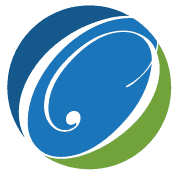Win themes have three main functions in a pursuit:
1. In the capture phase, win themes are a first step in defining win strategy (and not the other way around). They help create customer messages to position the company; identify competitive advantages; and document the real reasons the company will win.
2. During the proposal, the win themes focus the proposal team’s writing on the benefits to the customer – providing an even bigger advantage if your competition has not taken the time to spell out their own value proposition.
3. During evaluation, inserting your win themes in different forms throughout the proposal helps the customer remember the key benefits of your solution, and answers the evaluator’s question: “Why should we select your company?” They also help your customer draft an award justification.
Most people are not certain what a great win theme should look like. This is because a win theme can be many different things, including:
– A recurring thought, a slogan, a tag line, or a punch line – for example, a way to identify your team with two attributes that your customer wants more: “Team Acme – Vigilance and Reliability.”
– A strength, or a unique feature of the proposed solution, service, or product (with the stated benefit): “Our proprietary media monitoring database will enable us to meet the reporting schedule using only six analysts instead of eight, cutting the total project cost by 25%.”
– A value-added proposition or a “freebie” to the Government: “We will perform transition and contract start-up at no additional cost to the Government.”
– A major disclosure, or a platform: “We approach network security proactively instead of reactively.”
– A discriminator, or an advantage: “We are the only company that has adapted the XYZ Technology.”
No matter what form your themes take, win themes are a conclusive set of reasons “why us” – why the customer should select us, and not the competitors.
The best win themes for proposals are pithy statements, about one to three sentences long. They include all three critical elements of the win theme – features, benefits, and proof. The more numbers and specific names packed into the theme, the more convincing and authoritative it will be. This win theme type is the hardest to put together well. It takes companies days of brainstorming to come up with the statements, and after all the effort, they often are still weak.
There are a few secrets to making this process more productive and less arduous.
One of the easiest ways to identify what is missing in your win themes is to color code your feature, benefit, and proof statements . For example, I like making all my features blue, benefits red, and proof green as the team develops them. This provides visual clues to where you need to add or brainstorm additional material.
Another secret is to brainstorm using a series of shorter sessions, no more than 2 hours each, to prevent brain drain and wandering focus. It’s best to use a web conferencing tool so that you can share the screen and get maximum productivity from the attendees. Break for homework assignments for a couple of days to get the next version of the win themes developed, and then gather again to continue your exercise.
P.S.: If you need Business Development, Capture Management, Proposal Management and Writing, or Proposal Training Support, contact us at (301) 384-3350 or at [email protected]. We have 900+ fully vetted capture and proposal managers, technical writers, graphic artists, orals coaches, editors, subject matter experts, and other proposal support. We have supported 18 out of the top 20 Federal Contractors and have won $18 Billion since 2005.
Best,
Olessia Smotrova-Taylor
CEO/President
OST Global Solutions, Inc.
www.ostglobalsolutions.com
Contact us to learn more.
